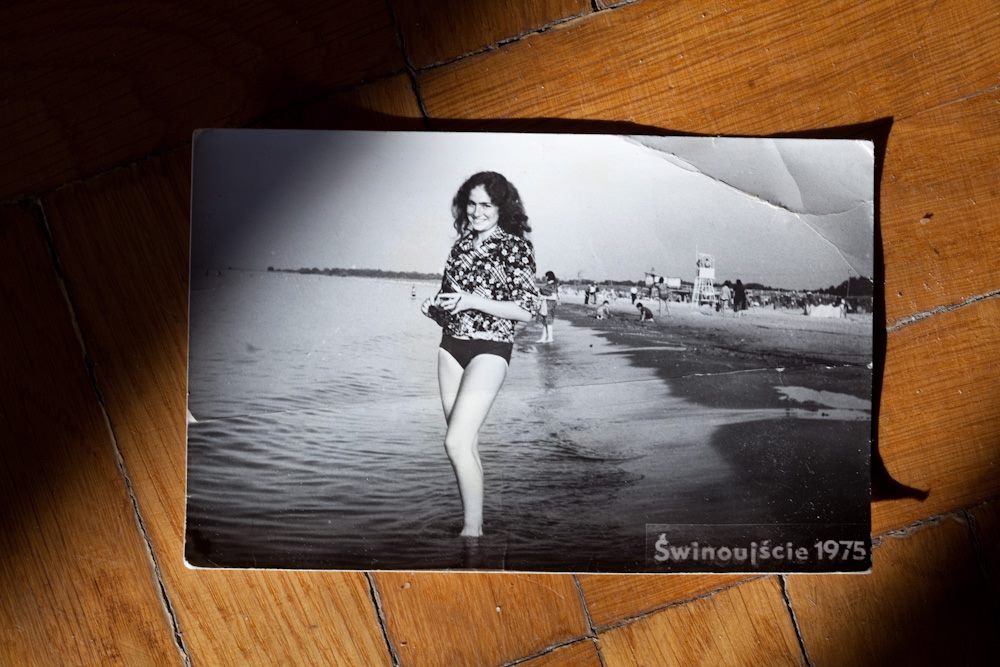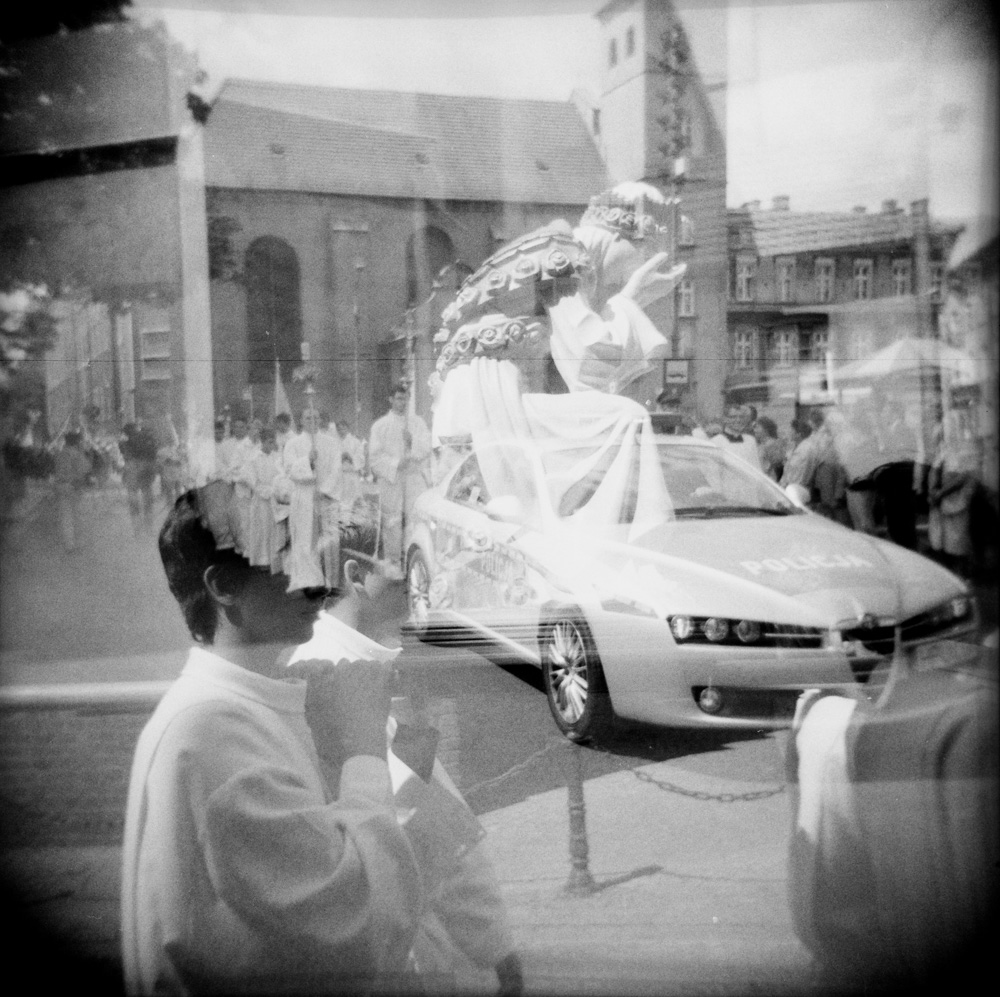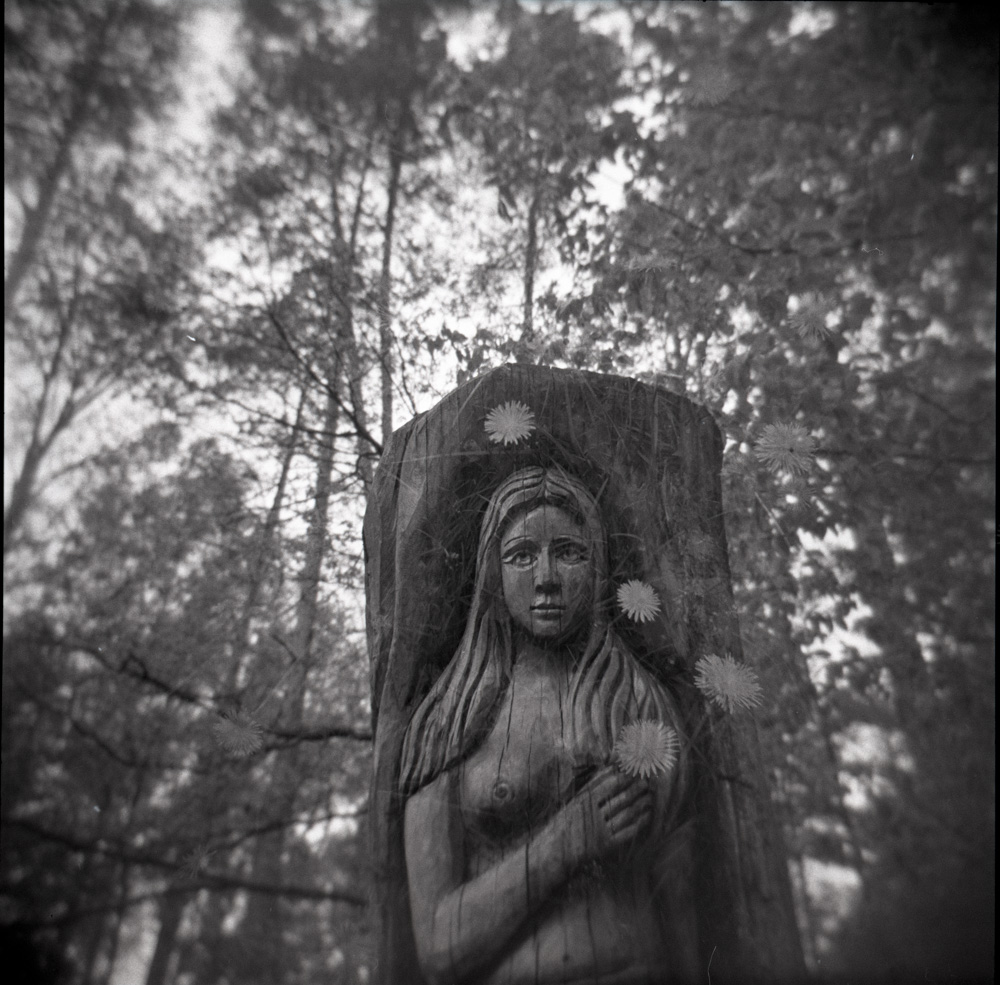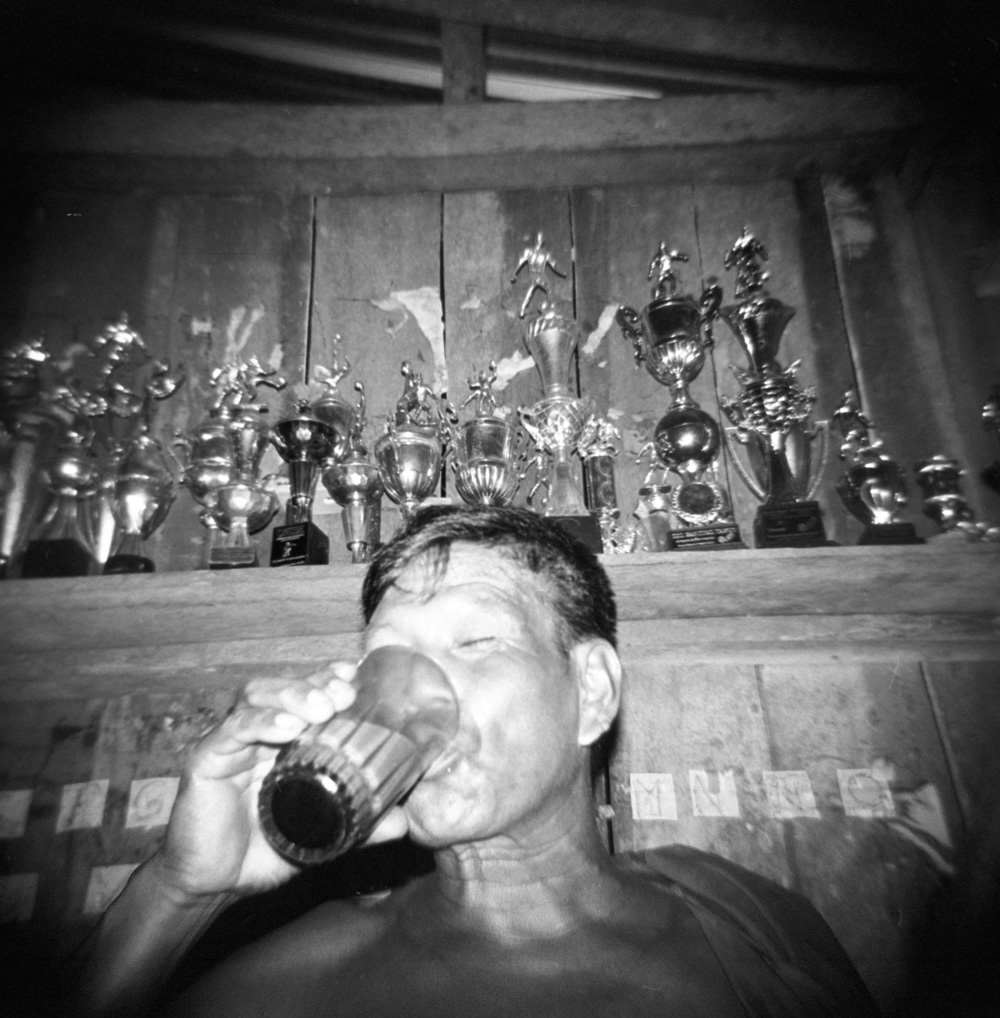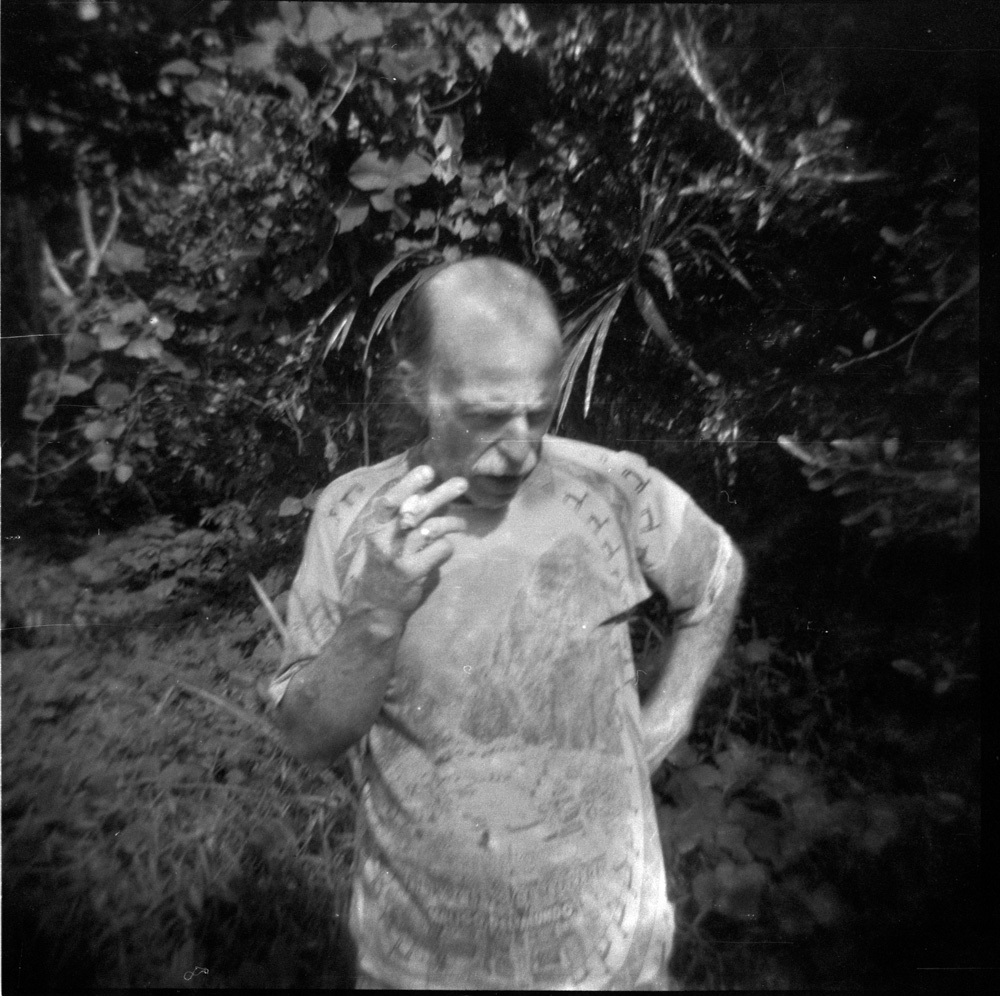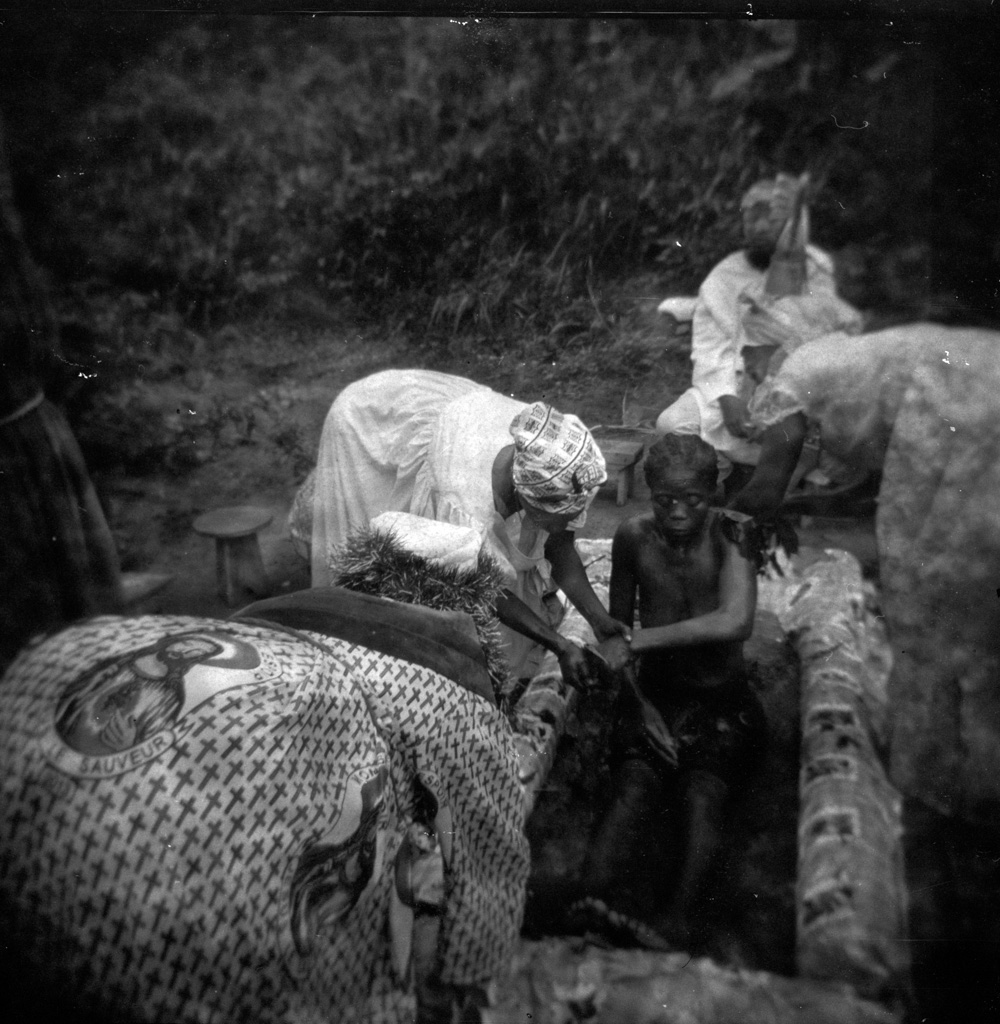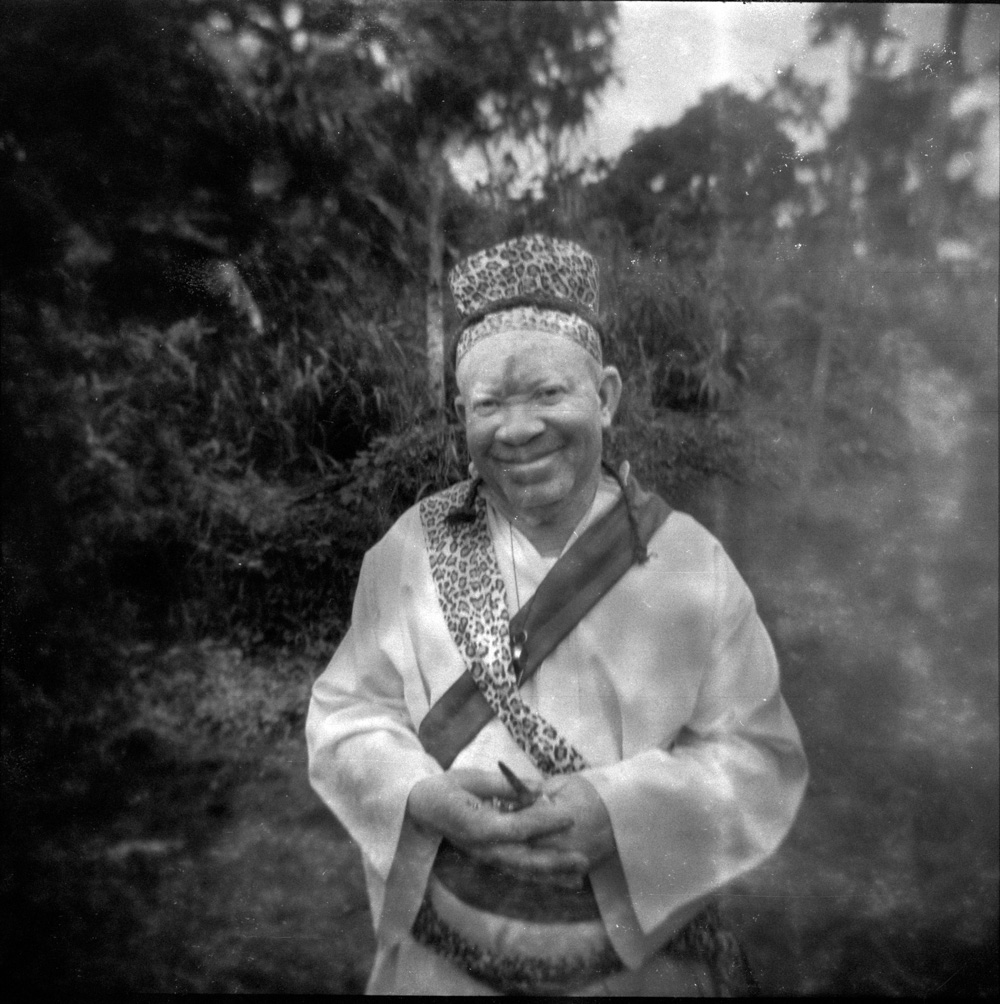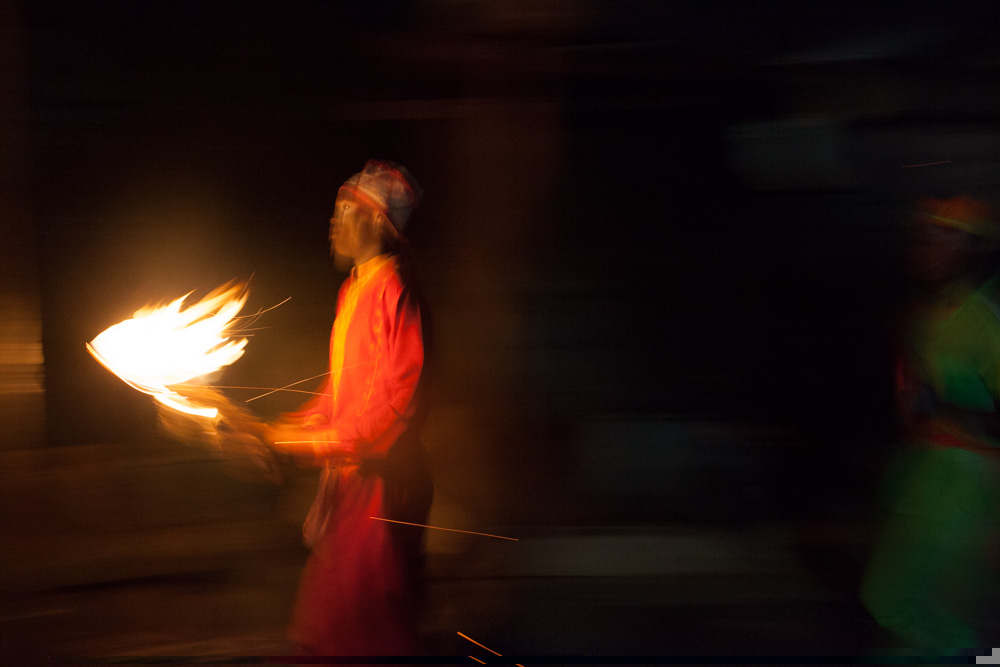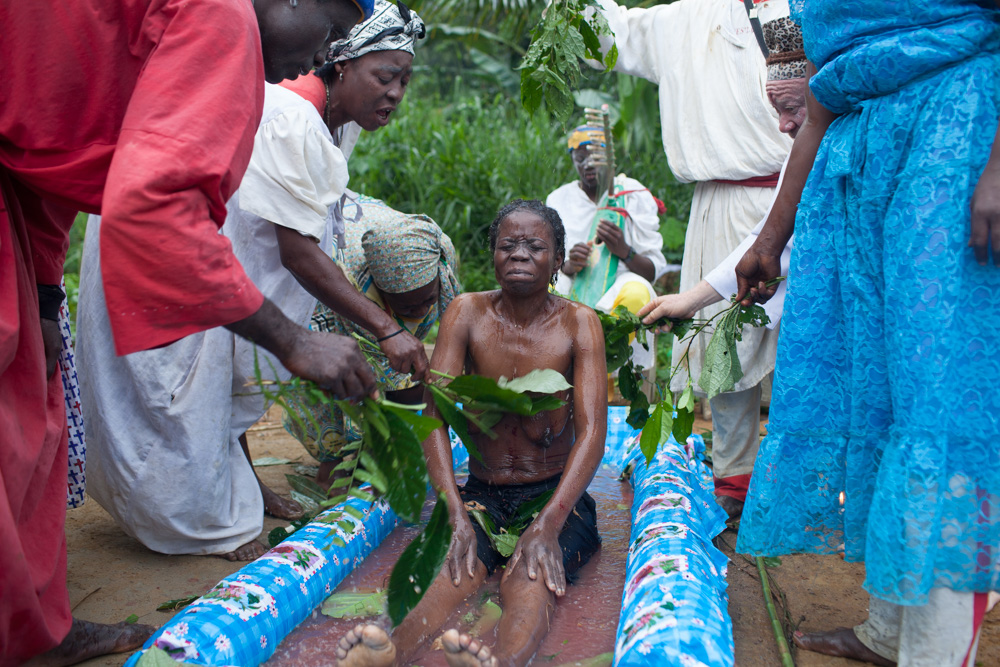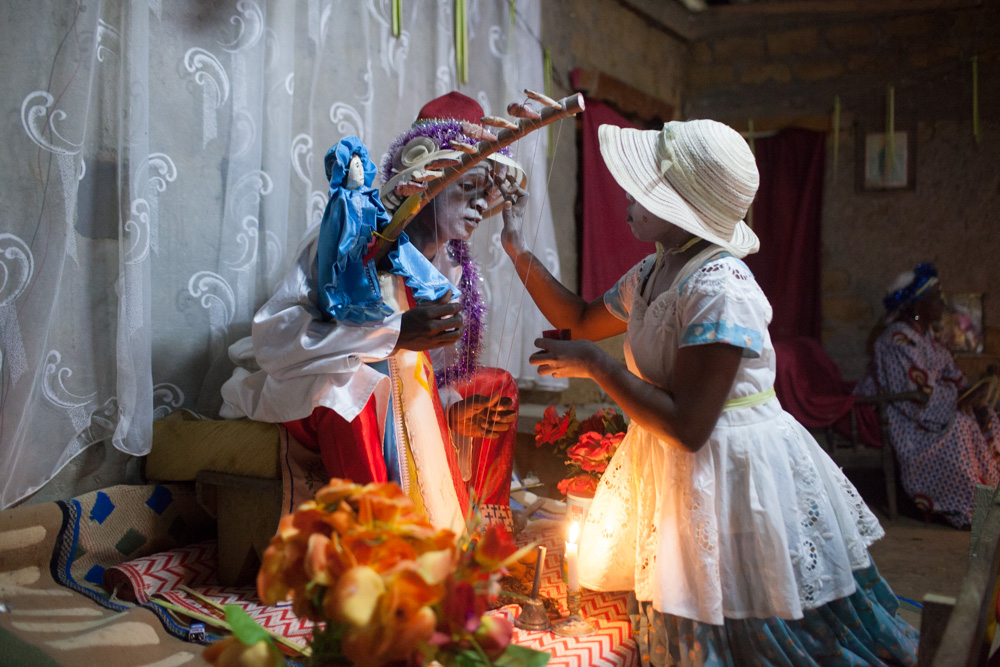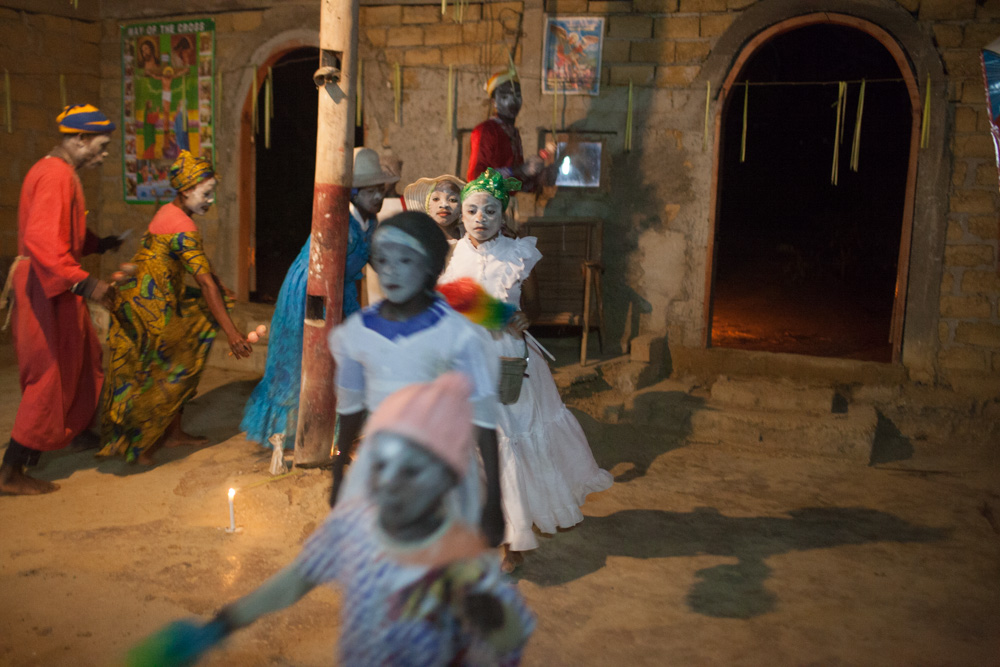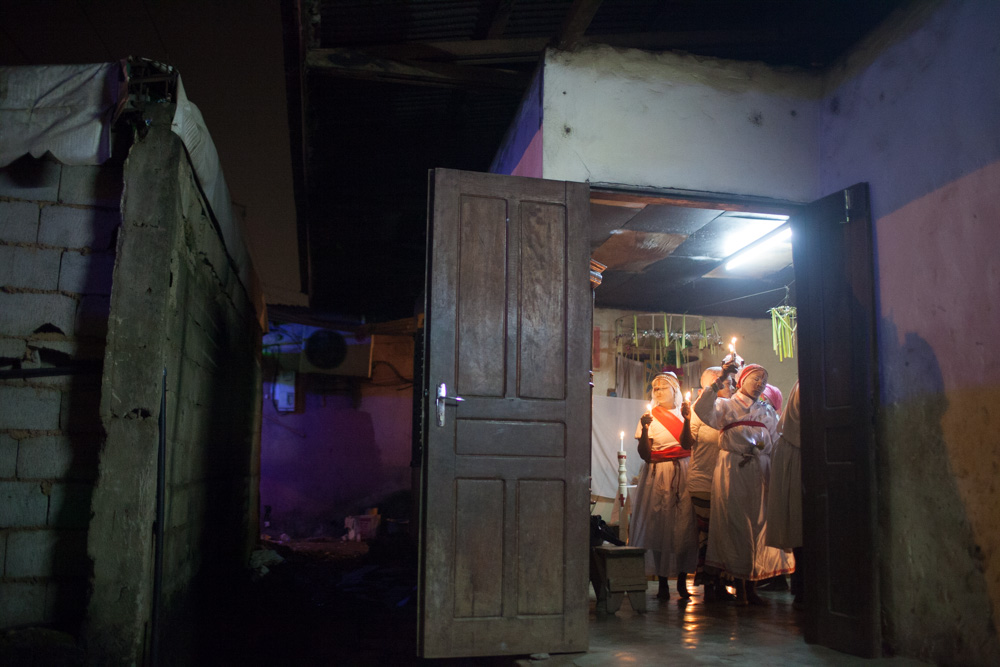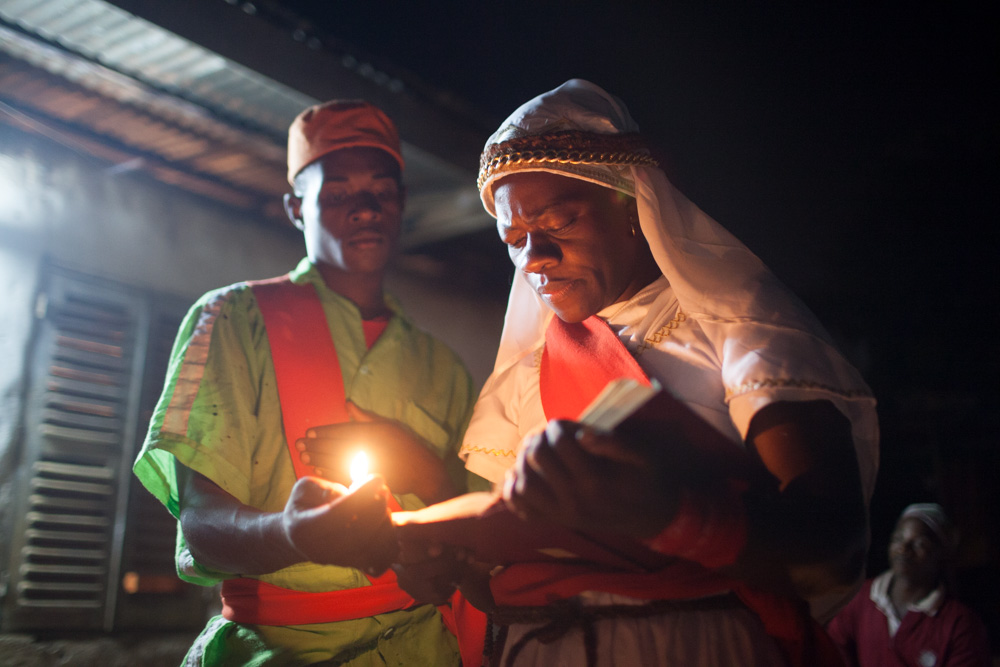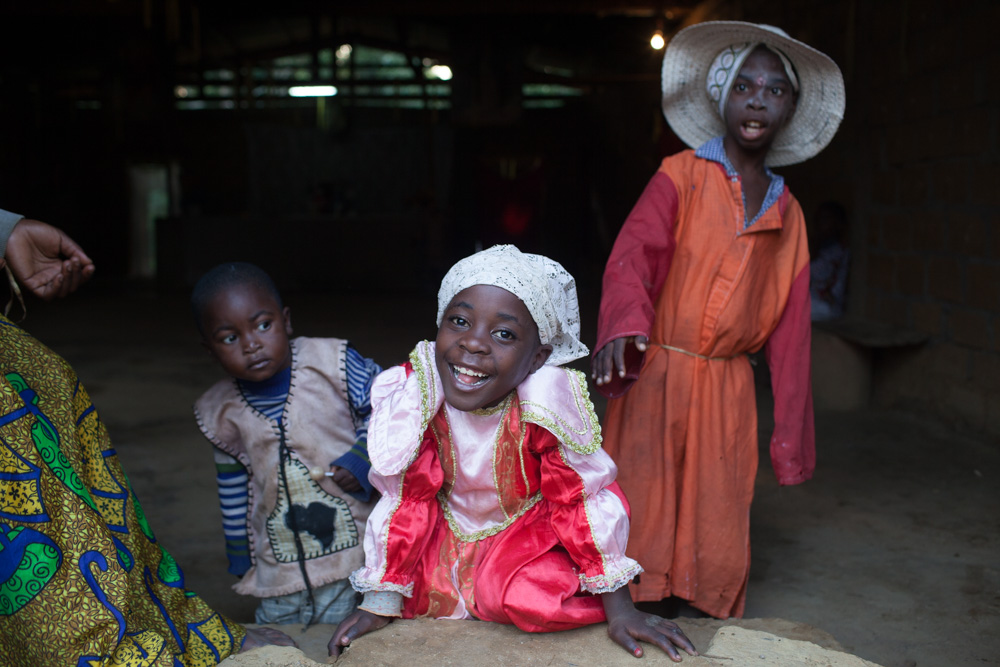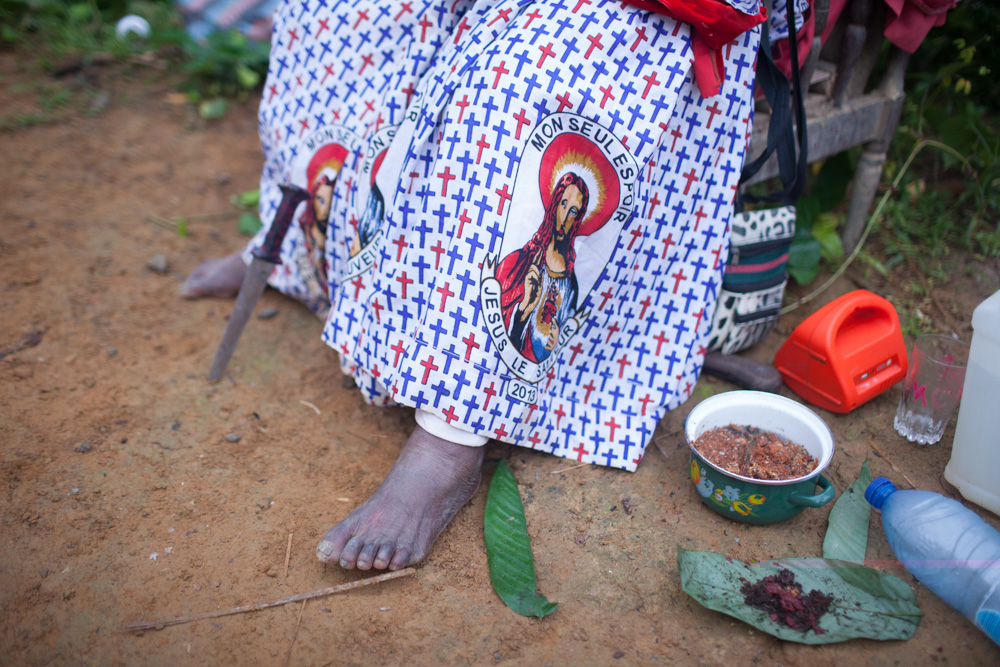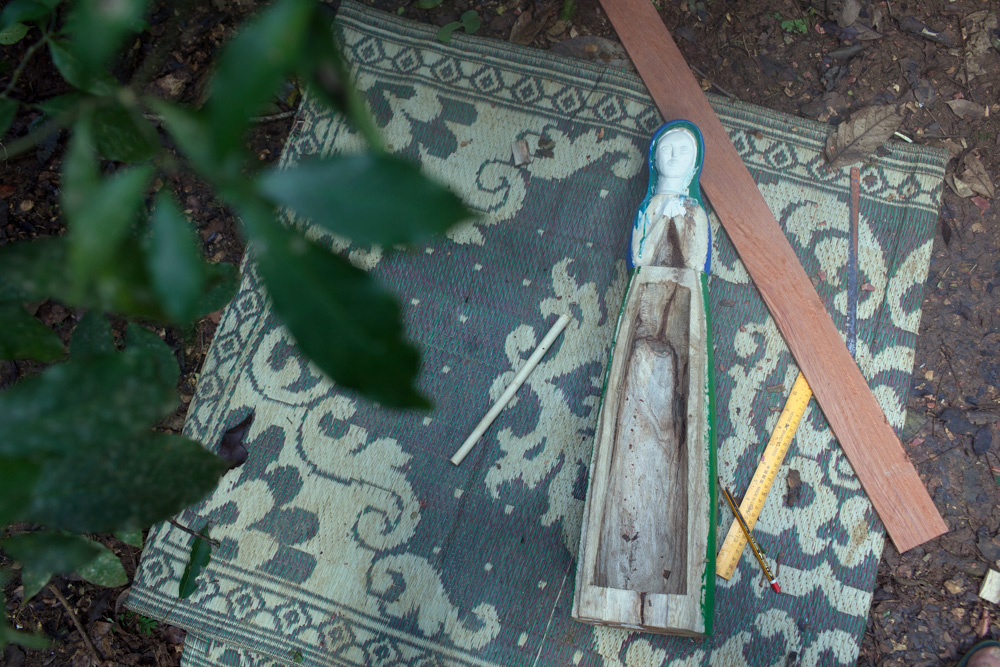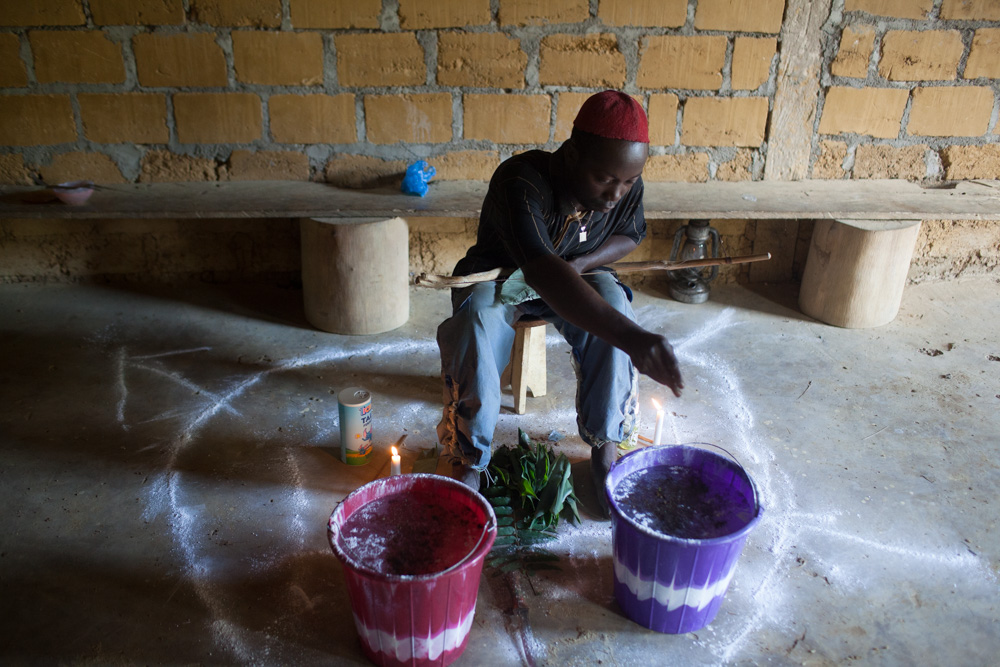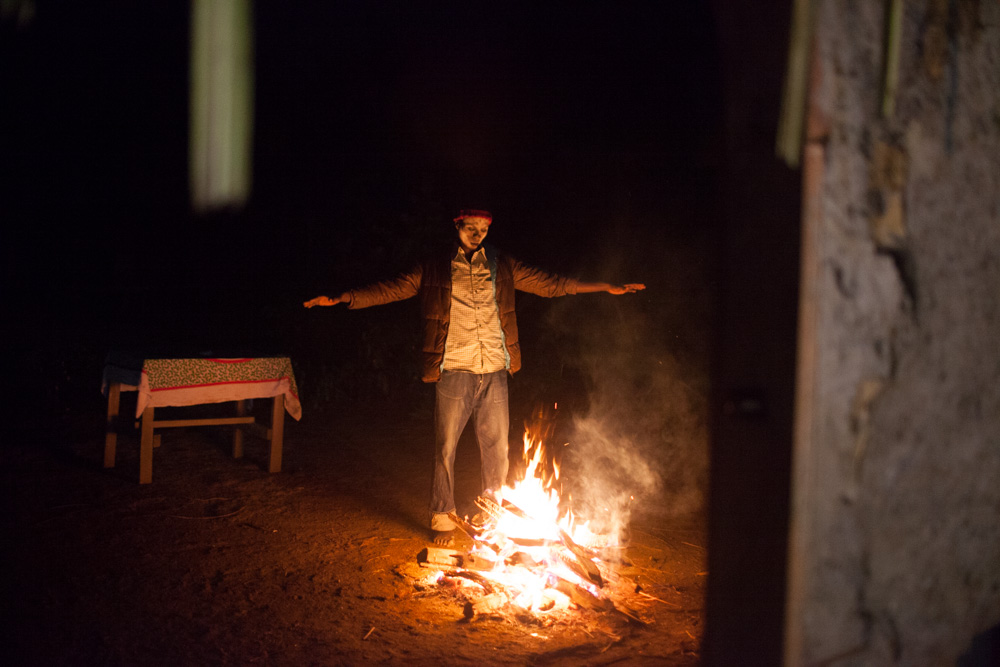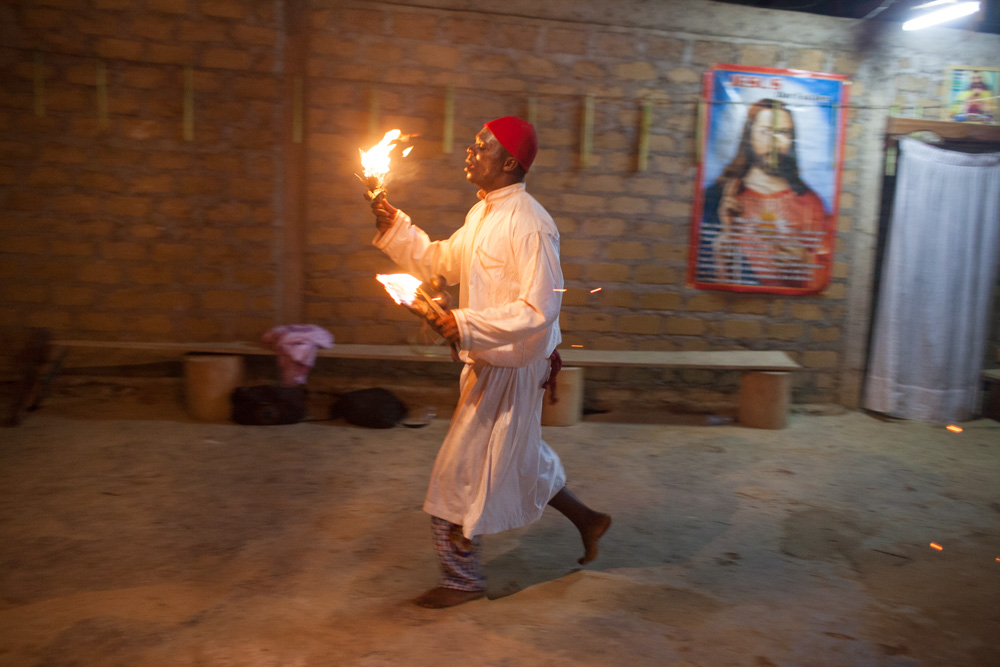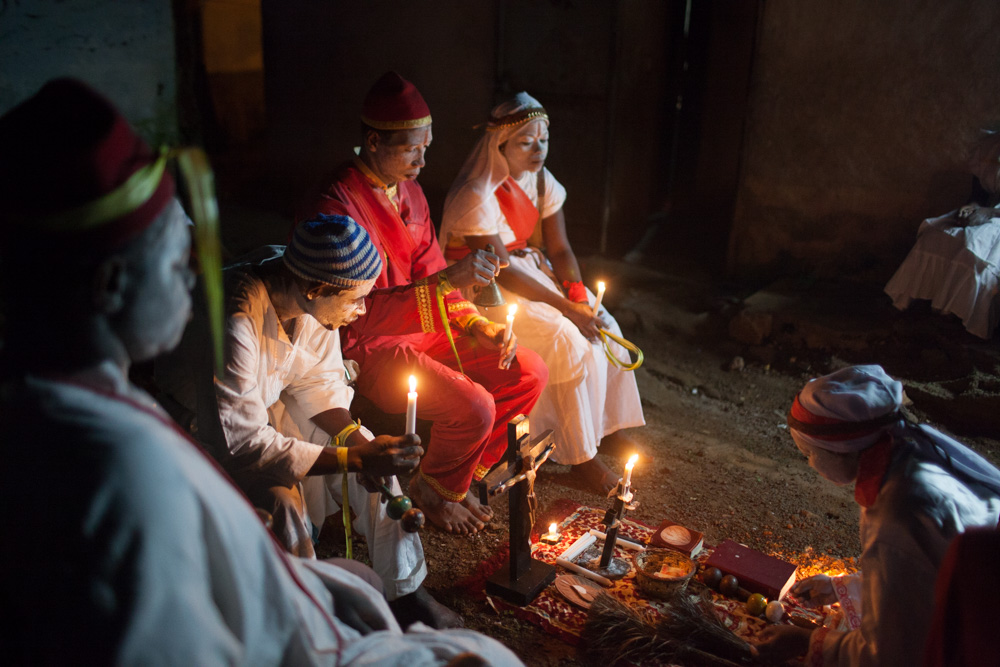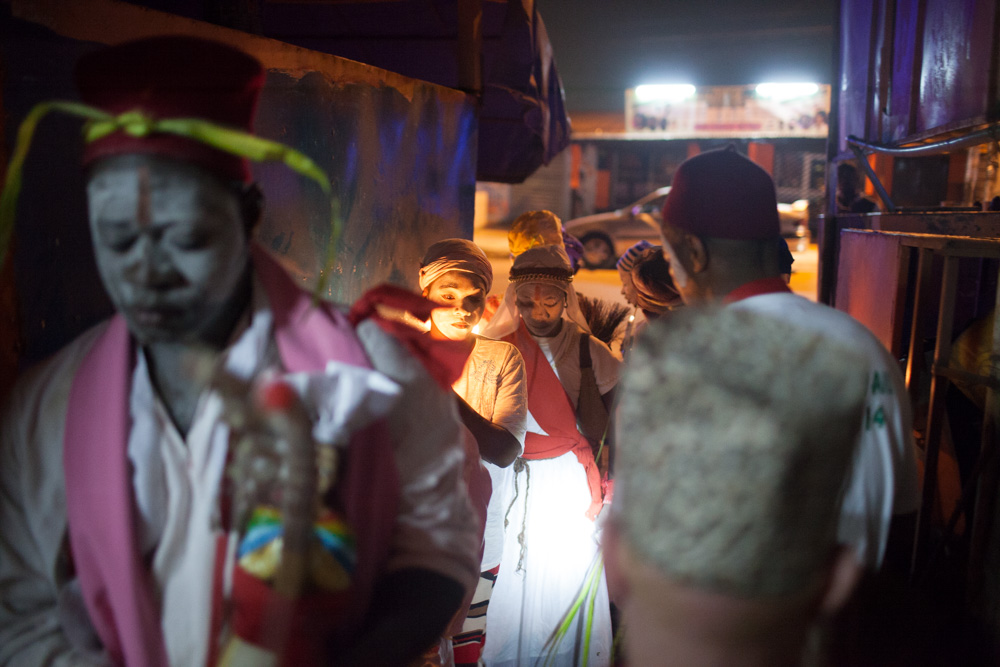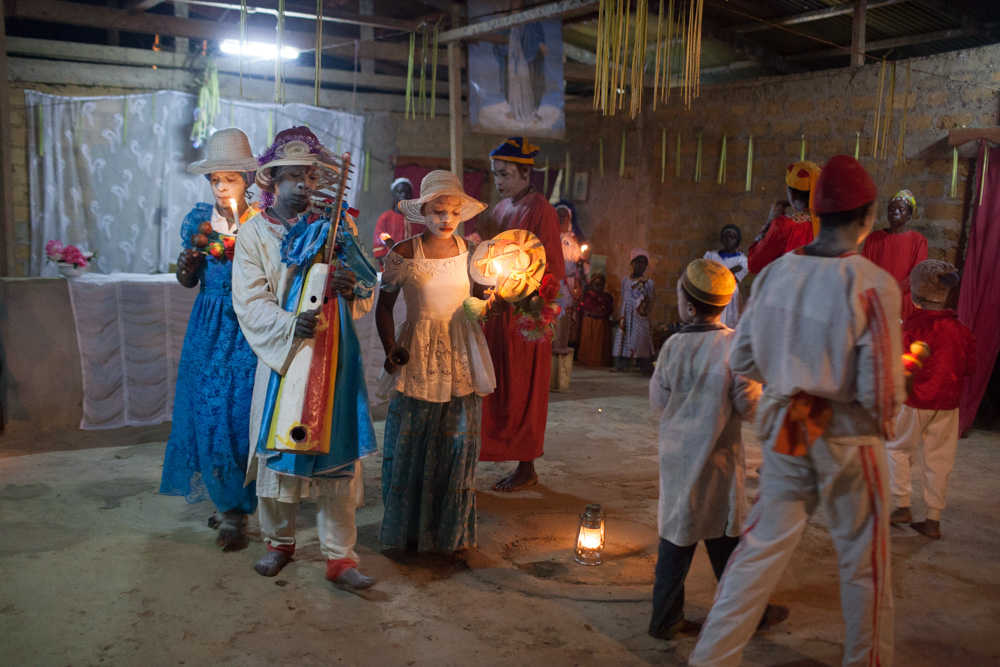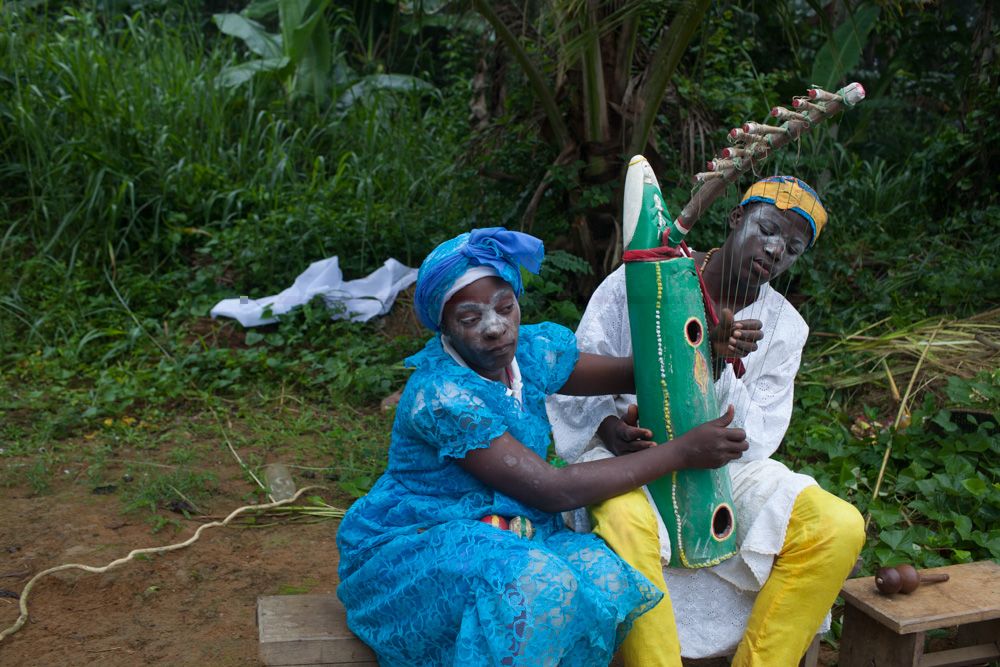On Saturday morning, 6:12 AM, when we were sleeping after medicine ceremony, my mum passed away in hospital, ending her many years long sickness and suffering. This was my request and intention the previous evening, before we drank, and yet another example of the sacred magic of this medicine.
…
W sobotni poranek, o 6:12, kiedy spaliśmy jeszcze po ceremonii z medycyną, moja mama odeszła w poznańskim szpitalu, kończąc wieloletnie cierpienie i chorobę. Taka była moja intencja wyrażona głośno przed ceremonią, poprzedniego wieczora, zanim wypiliśmy, i był to dla mnie kolejny przykład świętej magii tej medycyny.
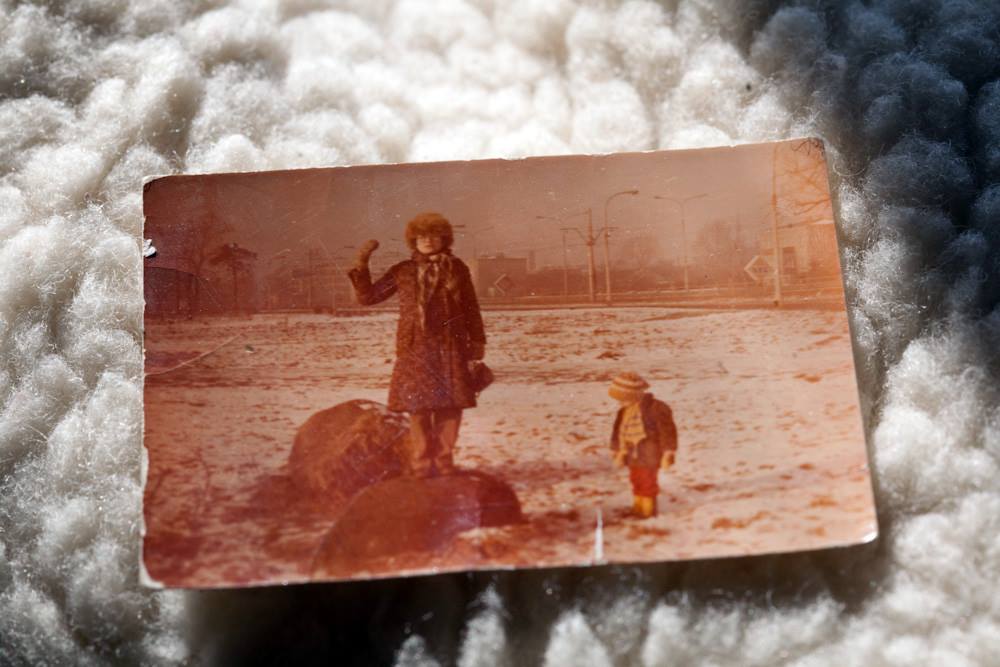
She spent her last years in coma, in a bed in our home. We were fortunate enough to have conditions and money to be able to do that, to have nurses after we couldn’t cope anymore on our own, and we were not forced to give her away to the terrible and soulless public hospice. In exchange, in very special way in that process, with this long illness she gave us amazing gift. She was my greatest teacher and even if I didn’t understand it back then, she brought me not only to this world, but also to the place I am now.
…
Spędziła ostatnie lata życia w śpiączce, w łóżku w naszym domu. Mieliśmy szczęśliwie takie warunki i środki aby jej to umożliwić, aby opłacić pielęgniarki kiedy nie mogliśmy już poradzić sobie sami, i nie musieliśmy oddawać jej do strasznej i bezdusznej instytucji jaką są państwowe zakłady opieki. W zamian za to, w bardzo szczególnym procesie jakim była ta długa choroba ofiarowała nam wspaniały prezent. Była moją największą nauczycielką i nawet jeśli nie rozumiałem tego wtedy, przyprowadziła mnie nie tylko na ten świat ale i do miejsca w którym jestem teraz.
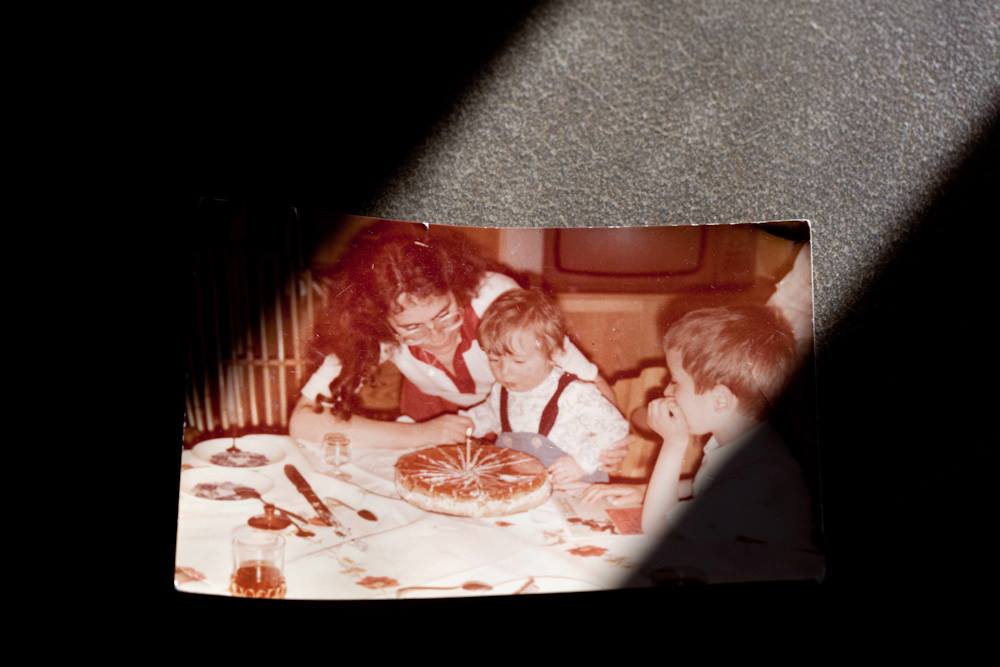
All pieces of the puzzle, with the clarifying force of the medicine started to come in place in recent years and I understood. You may talk about coincidences and laugh at synchronicities if you choose too, but it is like Einstein said, you may live your life either in depressing conviction that everything is accident, take everything for granted, and then no such thing as miracle exists, or you may live it like everything is miracle, and every thing is sacred, part of bigger story, which, when uncovered, can be only talked about in grand words, like destiny.
…
Wszystkie kawałki tej układanki, dzięki krystalizującej mocy amazońskiej medycyny zaczęły trafiać na swoje miejsce w ostatnich latach i zacząłem rozumieć. Możecie mówić o zbiegu okoliczności, przypadkach i śmiać się z synchroniczności, jeżeli tak wybierzecie, ale jest tak jak powiedział Einstein, można żyć w tym depresyjnym przekonaniu, że nic nie jest cudem, wszystko jest przypadkiem, albo tak jakby wszystko było cudem – i to już moje dopowiedzenie – że wszystko jest święte, jest częścią większej historii, o której, kiedy ją odkrywamy, można mówić tylko w wielkich słowach, takich jak przeznaczenie.
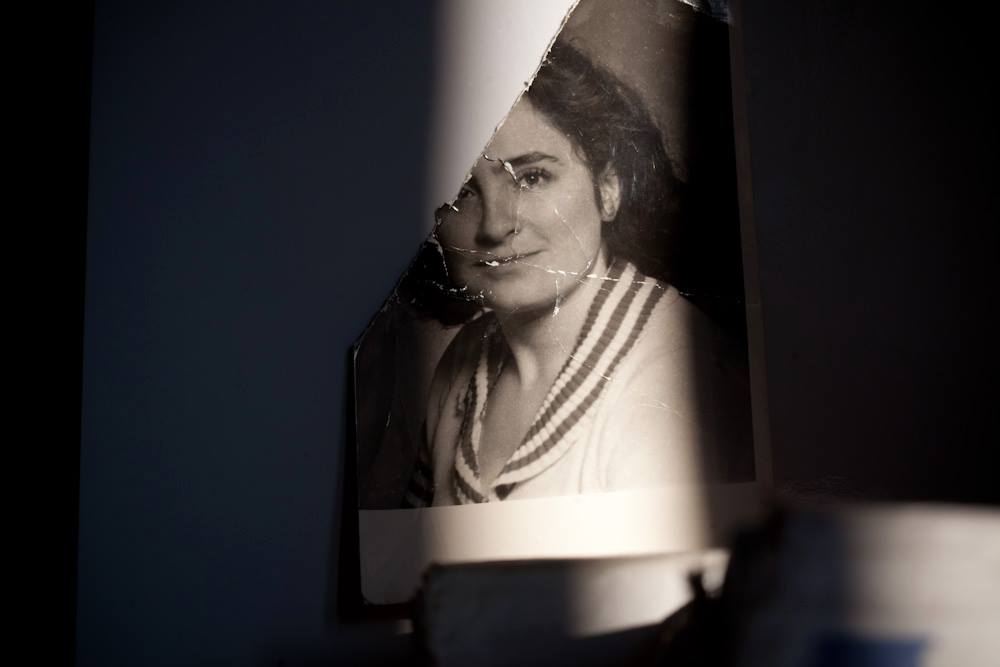
My mother had PhD in plant physiology which she managed to obtain when taking care of me in my infancy, in hard reality of 80′s in communist Poland. She was later forced to give up career as scientist, dedicating herself to raising me and my brother, and working as a biology teacher in college. She was very interested in the miracle of brain and the way it works. During these years, accumulated stress in family life, despite her great reserves of joy, ended up in serious, malignant brain tumour. I was in my early teenage years when I had to face the fact, after having lost my beloved grandfather, that my mother is going to die.
She used to be rational scientist, atheist, but in these hard years before the cancer, after an intense search, she managed to find great faith, so great, that despite all predictions, she managed to conquer the cancer completely. The word miracle was heard even from the doctors.
Unfortunately, two years later it came back. She was operated by her own brother and another renowned brain surgeon, and they managed to remove the cancer. But her brain was already affected by this and further damaged by the terrible and indiscriminate tool of modern medicine, radiotherapy and chemotherapy.
…
Moja mama miała doktorat z fizjologii roślin, który udało jej się zrobić kiedy zajmowała się mną w moich pierwszych latach, w ciężkiej rzeczywistości Polski lat 80tych. Była później zmuszona porzucić karierę naukową, poświęcając się wychowaniu mnie i brata, podejmując pracę jako nauczyciel biologii w liceum. Była zafascynowana cudem ludzkiego mózgu. Podczas tych lat, skumulowany stres rodzinnego życia, pomimo jej wielkich zapasów radości, doprowadził do tego, że zachorowała na złośliwy nowotwór mózgu. Byłem nastolatkiem kiedy musiałem skonfrontować się z faktem, już po utracie ukochanego dziadka, że moja matka ma umrzeć.
Była racjonalnym naukowcem, ateistką, ale w tych trudnych latach przed pojawieniem się raka, po intensywnych poszukiwaniach, udało się jej odnaleźć wielką wiarę, tak wielką, że pomimo wszystkich przewidywań, zdołała wygrać z rakiem. Słowo “cud” padało nawet z ust lekarzy.
Niestety, dwa lata później rak powrócił. Operował ją własny brat, i inny znany chirurg, i udało im się guz wyciąć. Ale mózg ucierpiał, i dodatkowo zniszczyły go straszne, nieprecyzyjne narzędzia współczesnej medycyny, radio i chemioterapia.
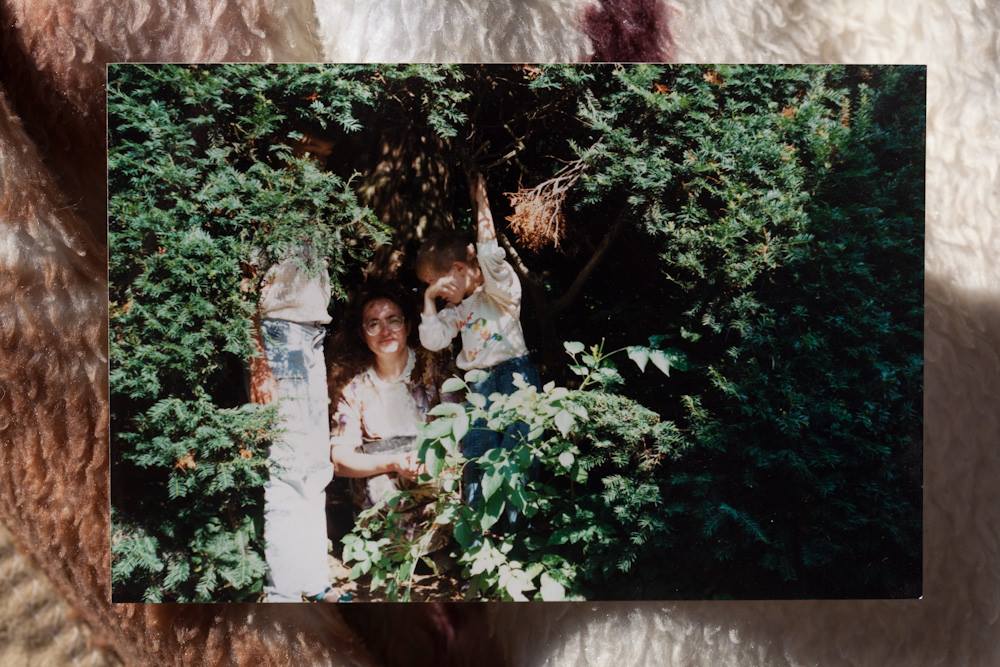
The cancer never came back, but I was witness for several years of a long process of deterioration started by this chemical assault on her organism. From person happy to be alive, to a more and more confused and lost, forgetting things, forgetting names, being forced to give up her job, getting lost in the streets, finally we had to lock her up in the flat for her safety, then slowly she started getting lost there, having accidents, losing control, deteriorating. Sad process of decline of a great brain, perhaps doomed precisely by the parasitic domination of the mind, after a series of strokes she ended up slowly loosing coherence, memory, communication skills, later motoric functions, turning into what is sometimes called vegetable, and I prefer to call helpless child. I was forced to watch reverse process, instead of watching my child grow I saw my mother go back to infancy and diapers.
But it wasn’t a story of a heroic battle of adult sons taking responsibility, it was a story of desperation, fear, unable to face reality we escaped in our own ways, both my father and us. In my case it was physical escape, traveling, coming back for a while for as long as I could face it and running away again. I now believe I did what I could but I had many regrets over the years. There was no easy choice. I know people who dedicated themselves completely in such situations and they could be called heroes, but often they are fallen heroes, believing themselves that in the process they wasted their own lifes. I choose to believe this story was not written in vain, and my escape, and the tragedy from which I escaped happened for a reason. What I brought from these wanderings and what I got out of being present in this situation when I finally was able to do it, was a great treasure and what I consider now legacy of my mother. I learned what was difficult in our family, I learned emotions, I learned to love, I learned compassion. I slowly learned how to live, I learned about what is life and what is imminent death, that in recent years was always around the corner. My mum was in what they called terminal state for at least 5 years, incredible amount of time, and now I feel immense gratitude because her suffering prepared me as gently as possible to face her death now with a mix of remorse and joy, rare opportunity. I am ashamed to admit this, I feel no one deserves it but I didn’t choose this story.
It wasn’t always so. When few years back she was in the intensive care unit, about to expire, I came to know the greatest fear of my life. I was already experienced after traveling in Sufi world and I knew their belief in death being joyous occasion, marriage day with One reality, but it was only intellectual knowing. It was later, working with ayahuasca I came to experience something more, I came to learn. I re-lived that terrible moment in one session with Taita Querubin Queta in Colombia and I understood I wept back then, in the hospital, not for my mother but for myself about to be left alone, I understood the words of Jesus – “you weep for yourselves”. But I wasn’t ready, and she didn’t leave me still.
…
Rak nigdy nie wrócił, ale byłem świadkiem wieloletniego procesu rozkładu, degeneracji, rozpoczętego tym chemicznym atakiem na organizm. Od osoby pełnej szczęścia z powodu odzyskanego życia, do coraz bardziej zmieszanej, pogubionej, zapominającej portfela, imion, zmuszonej do porzucenia ukochanej pracy, gubiącej się na ulicach, w końcu musieliśmy zamykać ją w domu, dla jej bezpieczeństwa, potem zaczęła gubić się i tam, kolejne wypadki, upokarzająca utrata kontroli, zanik. Smutny proces zmierzchu wspaniałego mózgu, nieszczęście wywołane być może pasożytniczą dominacją intelektu, wreszcie po serii udarów stopniowo traciła świadomość, pamięć, zdolność komunikacji, w końcu funkcje motoryczne, zamieniając się w coś co zwykło nazywać się warzywem, a ja wolę nazywać bezradnym dzieckiem. Byłem zmuszony obserwować odwrotny proces, zamiast patrzeć jak rozwija się własne dziecko, widziałem jak moja mama cofa się do kołyski i pieluch.
Ale nie była to historia heroicznej bitwy dorosłych synów biorących pełną odpowiedzialność, była to historia desperacji, strachu, niezdolni do konfrontacji z rzeczywistością uciekaliśmy, każdy na swój sposób, zarówno nasz ojciec jak i my. W moim wypadku była to fizyczna ucieczka, podróż, wracałem na tyle na ile dawałem radę i uciekałem ponownie. Teraz ufam że zrobiłem to co mogłem, co było mi pisane, ale miałem przez lata wiele wyrzutów sumienia. Nie było łatwego wyboru. Wiem o ludziach, którzy poświęcili się w takich sytuacjach zupełnie, i można nazwać ich bohaterami, ale często są to polegli bohaterzy, którzy sami wierzą, że zmarnowali sobie przy tym własne życia. Wybieram wiarę w to, że ta historia nie zdarzyła się na próżno, że w mojej ucieczce, i w tragedii od której uciekałem była większa przyczyna. To co przywiozłem z tej włóczęgi, i to co zdobyłem dzięki byciu obecnym w sytuacji, kiedy w końcu byłem do tego zdolny, to wielki skarb, coś co teraz uważam za dziedzictwo mojej mamy. Nauczyłem się tego co było trudne dla mojej rodziny, nauczyłem się emocji, nauczyłem się kochać, nauczyłem współczucia. Powoli uczyłem się żyć, nauczyłem się tego czym jest życie, i czym jest nieuchronna śmierć, która w ostatnich latach wciaż czaiła się za rogiem. Moja mama była w stanie jaki nazywali terminalnym przez ostatnie 5 lat, niesamowicie długo, i teraz czuję za to wielką wdzięczność, ponieważ tak przedłużające się cierpienie przygotowało mnie tak wolno jak to możliwe na przyjęcie jej śmierci z mieszanką sentymentalnego żalu ale większej radości, rzadka to możliwość. Wstydzę się to przyznawać, bo wierze, że nikt na to nie zasługuje, ale nie wybrałem tego scenariusza.
Ale nie było tak zawsze. Kiedy parę lat temu była na oddziale intensywnej terapii, i zgon był o krok, stanąłem wobec największego strachu swojego życia. Byłem już po doświadczeniach na ścieżkach sufizmu, i znałem wiarę sufi w śmierć jako radosną okazję, dzień zaślubin z Jednością, ale było to tylko intelektualne poznanie. Dopiero później, pracując z ayahuaską doświadczyłem czegoś więcej, nauczyłem się. Przeżyłem ponownie ten straszny moment w nocnej ceremonii z Taitą Querubinem Queta w Kolumbii, i zrozumiałem, że płakałem wtedy, w tym szpitalu, nie nad moją matką, ale nad sobą, który miał pozostać sam. Zrozumiałem słowa Jezusa – “nad sobą płaczecie”. Ale nie byłem gotowy, i mama mnie nie zostawiła.

Many months passed. Private nurses took care of my mother, we were spared more of the hard process of facing the deteriorating body, I could build back my private life that fell apart when my girlfriend couldn’t take it anymore, and I was able to dedicate my time to know better the plant medicine. I loved life more and more, felt guilty about my happiness, but I also believed even if life of my mother is no life as anyone would wish, I had no authority and power to take any steps. I knew however that no choice is also a choice and perhaps cowardliness.
Things got really bad last month. We reunited with my brother in first long family trip together since our childhood. We came back a week ago, and this weekend I was able to run two ayahuasca sessions. My mum died in between, and on the second night I was able to sing the song of thanks instead of cursing the cruel god.
Years ago I had nothing in common with interests of my mother and I never knew I would work in any way with the plants. I got her intelligence, ( and my father’s too ) but above all I got what is the most important, her love.
When I was a child, my grandfather, very close person to me, came back on his bicycle from his garden, laid down on a sofa and passed away. This calm for him, but sudden for me death was a great shock, hard to bear. To ease it I took a vow to try to be as honest and reliable man as he was, to honour his memory.
Now the situation was different, suffering was long and cruel, but I was well prepared. She taught me about suffering, faith and surrender. Her spirit together with the female spirit of ayahuasca taught me it is better to accept the story as it is written for us than live in constant anger and denial. I came to see my lack of patience I had with her, I could face it, accept it and try to change. This story in a way strange, but not unknown in shamanic traditions led me to path of the plant medicine. Thanks to this whole process I understand it now, as finally adult man, that mother’s love as this first love we know , is that precious spark almost everyone gets, and our task, our destiny is to protect it, and make it grow, to pass it on and share.
Nothing else matters.
…
Minęło wiele miesięcy. Prywatne pielęgniarki zajmowały się mamą co oszczędziło nam trudnego procesu obcowania z jej degenerującym się ciałem, mogłem odbudować swoje prywatne życie, które rozpadło się, kiedy moja dziewczyna nie dawała już rady w tej sytuacji, i mogłem też poświęcić czas poznawaniu lepiej roślinnej medycyny. Kochałem życie coraz bardziej, czując się winny z powodu mojego szczęścia, ale wierzyłem też, że nawet jeśli życie mojej mamy nie jest życiem jakie ktokolwiek by sobie życzył, nie miałem władzy, nie miałem siły na podjęcie jakiś kroków. Wiedziałem jednak, że brak decyzji jest także decyzją, być może tchórzostwem.
Rzeczy pogorszyły się bardzo w ciagu ostatniego miesiąca. Pojechaliśmy wtedy z bratem na pierwszą wspólną wyprawę od dzieciństwa. Wróciliśmy z niej tydzień temu, i w ten weekend poprowadziłem dwie ayahuaskowe sesje. Moja mama umarła pomiędzy nimi, i drugiej nocy mogłem zaśpiewać jej pieśń podziękowania, zamiast żalu i przeklinania okrutnego boga.
Lata temu nie miałem nic wspólnego z zainteresowaniami mojej matki, nigdy nie spodziewałem się, że moje zajęcie będzie się w jakikolwiek sposób wiązać z roślinami. Odziedziczyłem jej inteligencję ( jak i mojego ojca ), ale przede wszystkim to co jest najważniejsze, miłość.
Kiedy byłem dzieckiem, mój dziadek, bardzo bliska mi osoba, przyjechał z ogródków działkowym na swym starym rowerze, położył się na kanapie i umarł. Ta spokojna dla niego, a nagła dla mnie śmierć była wielkim szokiem, trudnym do zniesienia. Aby go złagodzić przyrzekłem mu, że będę starał się być tak uczciwym i niezawodnym mężczyzną jak on, aby uczcić jego pamięć.
Teraz sytuacja była odmienna, jej cierpienie było długie i okrutne, ale ja byłem dobrze przygotowany. Nauczyła mnie przykładem o cierpieniu, wierze i poddaniu. Jej duch razem z żeńskim duchem ayahuaski nauczył mnie, że lepiej zaakceptować historię jaka jest nam napisana niż żyć w ciągłym gniewie i wyparciu. W końcu zobaczyłem mój brak cierpliwości jaki wobec niej i innych miałem, mogłem go ujrzeć, zaakceptować i próbować zmienić. Ta historia w dziwny, ale znany dobrze w szamańskich tradycjach sposób, poprowadziła mnie na ścieżkę roślinnej medycyny. Dzięki temu procesowi zrozumiałem w końcu, wreszcie jako dorosły mężczyzna, że miłość matki jako pierwsza miłość jaką poznajemy, jest tą drogocenną iskierką jaką prawie każdy dostaje, i naszym zadaniem, naszym przeznaczeniem jest chronić ją, pozwolić jej rosnąć, przekazać dalej.
Nic innego nie ma znaczenia.
